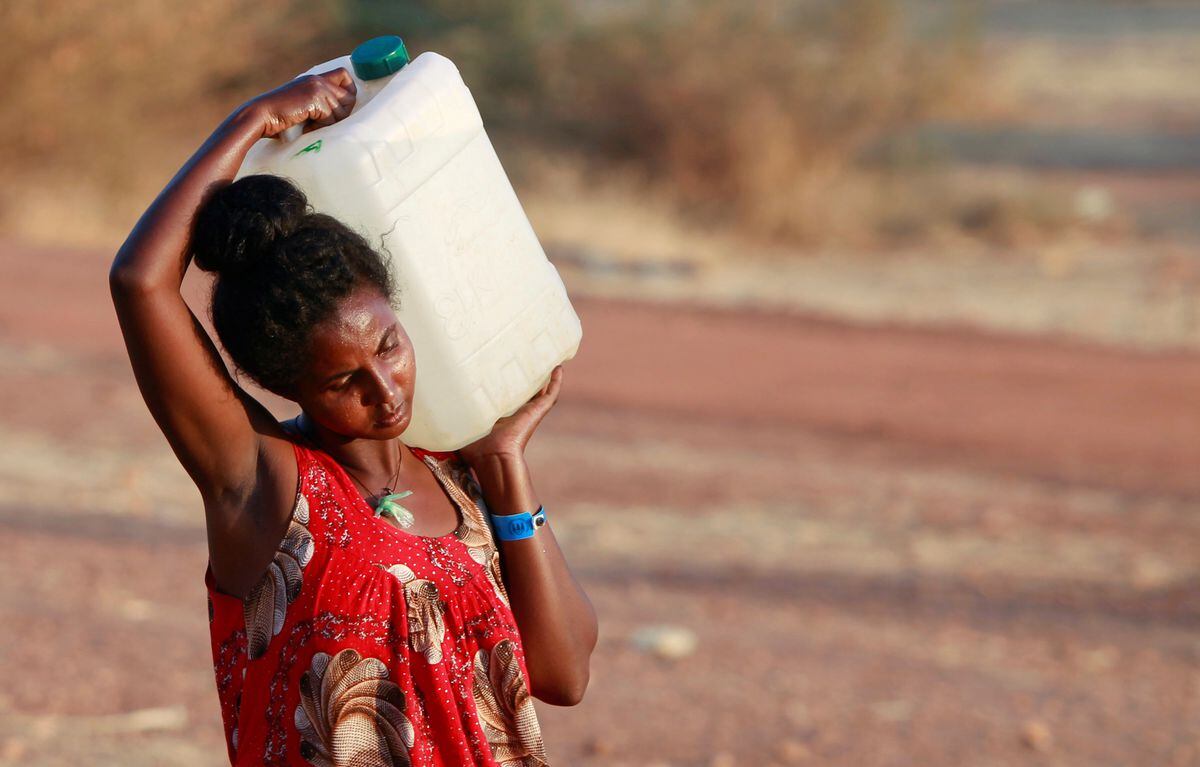The act of opening a tap in Botswana and drinking the treated water for consumption is not a guarantee of health.
A study by the Barcelona Institute for Global Health (ISGlobal) reveals that in this country its regulation allows concentrations of trihalomethanes —a chemical by-product resulting from the interaction of chlorine disinfectant with organic matter— 10 times higher than what the European Union allows ( 100 micrograms per liter), in line with the recommendations of the World Health Organization.
Research published in the journal
Water Research
shows a "huge gap" between high-income and low-income countries regarding the way they regulate and control the presence of chemical contaminants in drinking water, in the words of its authors.
And they warn that prolonged exposure to trihalomethanes "is consistently associated with bladder cancer."
“We found that many countries lack regulation;
and there are those who do have it, but do not carry out controls”, explains Cristina Villanueva, an ISGlobal researcher who participated in the study.
According to data analyzed from 116 countries, in 27 there are no regulations regarding the presence of trihalomethanes in drinking water.
And among the 89 countries that have a regulation in this regard, the maximum permitted levels range from 25 micrograms per liter in Denmark to 1,000 in Botswana.
Among these ranges, the most restrictive countries are Austria, Zambia and Italy —whose guidelines establish a maximum of 30 micrograms per liter— compared to the most lax, which are Ecuador (500), Australia (250), Mexico and Colombia (200). .
Nor does having a standard, whatever the concentration allowed, ensure that the authorities monitor compliance.
Only 47 countries carry out routine controls, according to the findings of the research team, and not always on the water consumed by the majority of their population.
In 14 of them, including China, India, Russia and Nigeria, —which bring together 40% of the world population—, they record data on the levels of trihalomethanes in certain cities or delimited territories, so their results are partial.
In five—Albania, Nigeria, Uganda, Vietnam, and Zambia—not even that.
Of another 33 it is not possible to know if they do some type of control or not because there is no data in this regard.
It is preferable to chlorinate the water and prevent diarrhea than to avoid the chemical risk
Cristina Villanueva, ISGlobal researcher
The presence of trihalomethanes is a sign that it has been chlorinated, which is essential to eliminate pathogens that cause diseases such as diarrhea, the leading cause of infant mortality in children under five in the world, according to the WHO.
Each year, more than half a million die from this preventable and treatable disease.
"It is preferable to chlorinate the water and prevent diarrhea than to avoid the chemical risk."
Villanueva clarifies that his study does not question the use of chlorine as a disinfectant, but the lack of regulation and controls regarding the adverse effects that its use causes: the generation of pollutants such as trihalomethanes in high quantities.
There is no single solution to improve water quality, but the ones that do exist are complex and out of reach in disadvantaged economies.
“Add treatment stages and other complex processes can be afforded by high-income countries.
For the less developed, the options are limited”, explains Villanueva.
"Some choose to use other disinfectants other than chlorine, such as Italy, or reduce organic matter in the water before treating it," says the expert.
It also reduces the risk of trihalomethanes being generated by drawing groundwater that is clean enough, with less organic matter to interact with chlorine.
"But it's not always available."
In developing countries, Villanueva suggests "looking for other tailor-made solutions" such as treatment at the point of consumption, the use of ceramic filters or solar systems.
"The lack of data in these countries is due, to a large extent, to the fact that there is no centralized water supply and consumption is too fragmented, which makes control tasks difficult," he details.
The sixth of the 17 Sustainable Development Goals calls for guaranteeing universal access to safe, contamination-free water by 2030. In the opinion of the researchers, this justifies the need to deepen the study of what legislation exists in this regard and How does it apply.
But there is still a "lack of knowledge about the presence of chemicals in drinking water, especially in low- and middle-income countries," they lament.
The problem, they conclude, is growing;
however, the care you receive is “limited” compared to the care you receive by the extended supply.
The authors acknowledge that water scarcity is a crisis that is going to get worse.
More than 2,000 million live in countries with water stress, a situation aggravated in some regions as a consequence of climate change and population growth, notes the WHO.
That same number of people use a drinking water source contaminated with feces, which represents "the greatest risk to the safety of drinking water," according to this organization.
In 2020, according to their data, 74% of the world's population (5.8 billion people) used a safely managed drinking water service, available when needed and free of contamination.
ISGlobal's findings confirm that the unknown and uncontrolled presence of chemicals prevents us from definitively corroborating this statement.
You can follow PLANETA FUTURO on
,
and
, and subscribe
here
to our 'newsletter'
.

